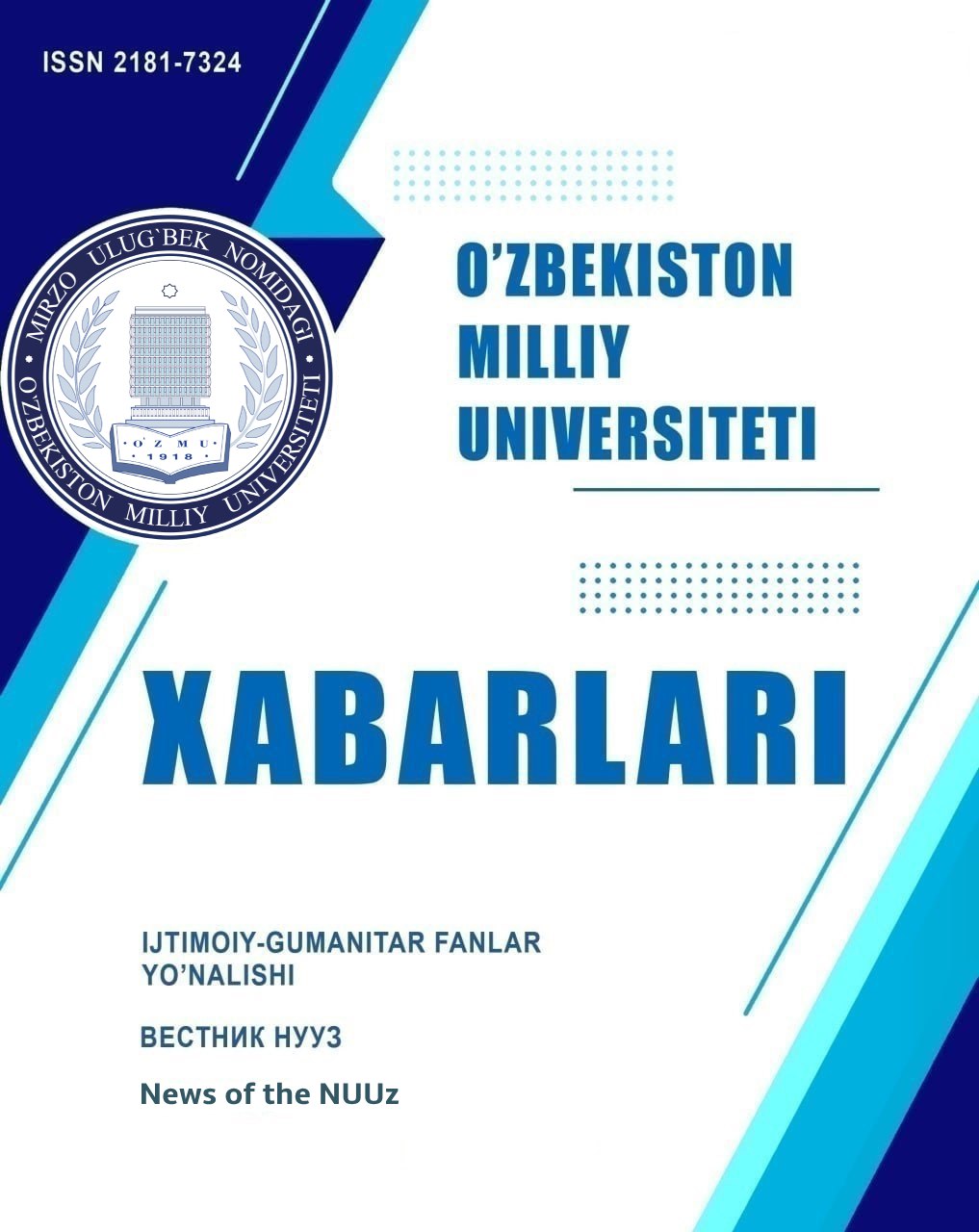PRAGMATIC FEATURES OF UNITS EXPRESSING SURPRISE IN ENGLISH AND UZBEK LANGUAGES
Abstract
Language is a complex and multifaceted system that enables individuals to communicate and express a wide range of emotions, thoughts, and ideas. One of the key aspects of language is its ability to convey surprise, a universal human emotion that is often expressed through verbal and nonverbal means. In this article, we will examine the pragmatic features of units expressing surprise in both the English and Uzbek languages, and explore how these features contribute to the overall communicative effectiveness of each language.
References
Morris C.W. Foundations of the theory of signs. Chicago; The University of Chicago press, 1938. p 59.
Moore G. The pragmatics of Revision. – Palgrave Macmillan; 2020.
Levinson S.C. Pragmatics. – Cambridge; Cambridge University Press, 2008. 420p.
O‘zMU xabarlari Вестник НУУз ACTA NUUz FILOLOGIYA 1/6 2024
- 376 -
Safarov Sh.S. Pragmalingvistika. Toshkent; O‘zbekiston Milliy Ensiklopediyasi, 2008. 5. Giora R. Graded Salience Hypothesis. Journal Humor; 1999.
Clark H.H. Pragmatics and Discourse. University of Chicago Press, 1992. p 43
Qodirova M.N. The use of Interjections in Uzbek Discourse. Dissertation. 2014.
Mirzakhmedov M.M. Politeness Conventions in Uzbek Communication, Tashkent; 2007.
Hakimov.M. O‘zbek pragmalingvistikasi asoslari. Toshkent; Akademnashr, 2013. 176 b.
Matsumoto Y. A study of linguistic politeness in Japanese. Journal of Pragmatics, 403 p.
KARIMOVA, S. (2024). MAXZAN UL-ASROR BILAN MAJMA UL-AXBORDAGI HIKOYALAR QIYOSIY TAHLILI. News of the NUUz, 1(1.7. 1), 275-277.
Copyright (c) 2024 News of the NUUz

This work is licensed under a Creative Commons Attribution-NonCommercial-ShareAlike 4.0 International License.


.jpg)

1.png)







